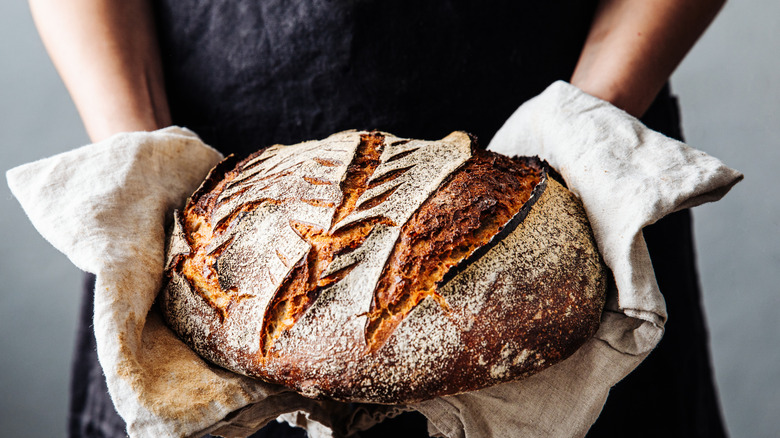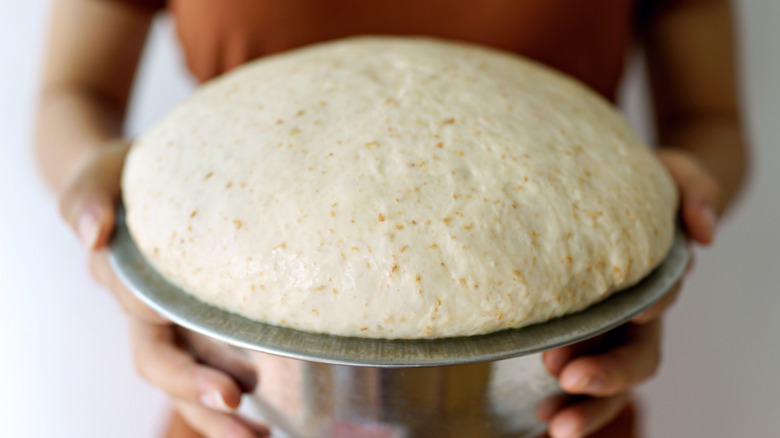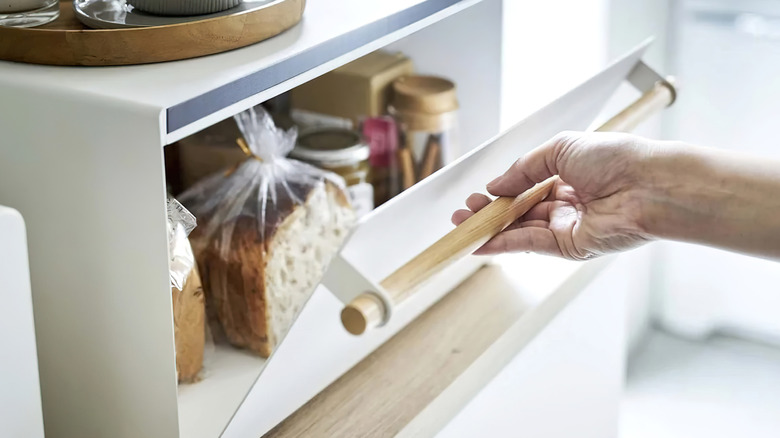The Real Reason Sourdough Bread Is One Of The Safest Breads You Can Eat
Getting food poisoning will cramp your style — and likely your gut, too. That's why it's best to adopt food safety practices like disinfecting countertops, cooking meats thoroughly, and refrigerating mayonnaise promptly. After all, the last experience you want is to have problems related to consuming a foodborne pathogen caused by food storage mistakes. Keeping this in mind, you may want to start reevaluating some of the foods you eat to avoid products that are more likely to spoil or mold. This includes bread.
Although most types of bread can stay consumable for days, bread will start to break down eventually and become moldy. When that happens, it needs to be tossed. Even if you cut out all the white, green, or "fuzzy" spots you see, the bread remains unsafe. And while eating bread with mold isn't guaranteed to turn your stomach, it isn't wise. "Some molds can actually be very, very toxic to human beings. They can also cause allergic reactions and respiratory problems," according to dietitian Lillian Craggs-Dino, who noted that certain molds could be toxic enough to be fatal (via Cleveland Clinic).
Of course, you can minimize your chances of dealing with this issue by choosing sourdough bread over other types. Thanks to its core ingredients, it may be one of the safest and long-lasting breads you can keep in your kitchen.
Fermentation process resists bacteria breakdown
Sourdough bread relies on a special starter that can take a week or longer to develop. The starter takes the place of a commercial yeast in the bread-making process, essentially causing the sourdough bread dough to rise through steady (but slow) fermentation. As the loaf ferments, it takes on a signature sour flavor. At the same time, the bread's pH begins to dip, and the loaf gains improved shelf stability (per the American Society for Microbiology). Essentially, all the fermentation-produced microbes in the sourdough bread give it a kind of preservation power.
Just how long will your fresh sourdough bread stay fresh? Every loaf is different, but in general, sourdough bread should remain edible for around five days. That said, if you see any signs that your sourdough bread has mold, it needs to go in the garbage because it's one of the tell-tale signs that it is no longer safe to eat. (On the other hand, if your bread is only hard but not yet moldy, you could find other uses for your stale bread, such as tossing small pieces into soup or using them as salad croutons.)
Reducing blood sugar rollercoaster rides
Sourdough bread may be safer for you in another way if you're prediabetic or diabetic and want to avoid the health risks associated with blood sugar spikes. That's because sourdough bread is lower on the glycemic index (GI) than other kinds of bread, with a GI rating of 54 out of 100 for a 30-gram serving. The lower a food's GI, the slower it causes blood sugar to rise. A 2024 review in Critical Studies in Food Science and Nutrition found that eating sourdough bread (especially sourdough bread made from whole wheat flour) caused less of a spike in post-meal blood sugars in human subjects.
Above all else, sourdough could be a safe food bet, particularly if your family rarely eats a whole loaf in a day and you want to avoid wastage. However, you can't just expect sourdough bread to stay edible for longer if it's not stored correctly. Some proven methods for giving your sourdough bread a longer lifespan include covering it with a loose towel and placing it in a bread box, resting it cut-side down on a wooden board or countertop, and freezing slices to thaw or toast later.



